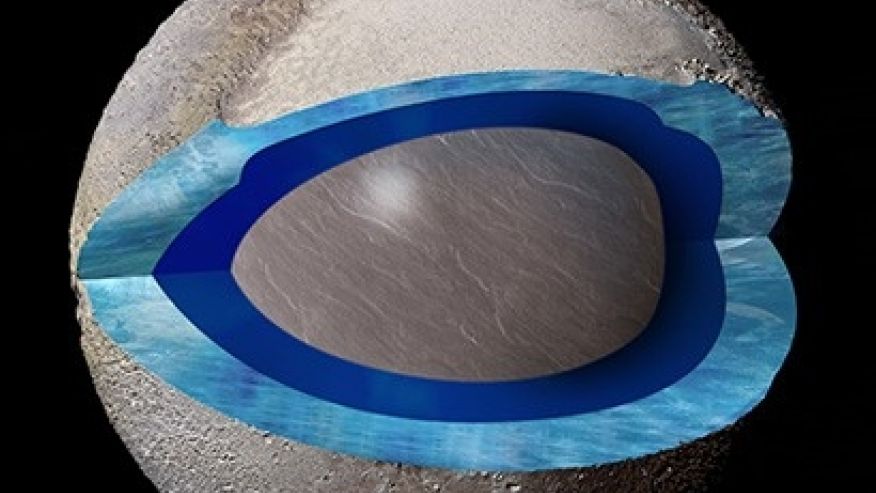If you’re planning on visiting Pluto anytime soon, best to bring some warm boots. A frigid, possibly “slushy” subsurface ocean could be lurking under the crust of the dwarf planet, according to a new study published on Wednesday in the journal Nature.
Scientists are interested in a region of Pluto known as Sputnik Planitia, a basin covered with frozen nitrogen that could be anywhere from about two to six miles thick. Because this part of Pluto lines up with Charon, the dwarf planet’s biggest moon, scientists think that an icy ocean below the surface of this area could be producing a gravitational anomaly that explains the orientation between the two celestial bodies. NASA’s New Horizons probe, which whizzed by Pluto in 2015, provided the researchers with data.
Sputnik Planitia is “a big, elliptical hole in the ground, so the extra weight must be hiding somewhere beneath the surface. And an ocean is a natural way to get that,” Francis Nimmo, the study’s first author and a professor at the University of California, Santa Cruz, said in a statement.
STRANGE FEATURE ON MARS IS A GOOD PLACE TO LOOK FOR LIFE, STUDY SAYS
Sputnik Planitia is part of a larger feature on Pluto’s surface is called Tombaugh Regio, which is shaped like a heart.
“Pluto is hard to fathom on so many different levels,” Richard Binzel, a coauthor on the new study and a professor at MIT, said in a statement. “People had considered whether you could get a subsurface layer of water somewhere on Pluto. What’s surprising is that we would have any information from a flyby that would give a compelling argument as to why there might be a subsurface ocean there.”
Binzel pointed out that there’s a very small chance— “less than 5 percent,” he said— that the part of Pluto they focused on had “randomly” aligned with Charon so closely. The best explanation, they posit, is an icy ocean below the crust.
NASA SEES EVIDENCE OF WATER VAPOR PLUMES SHOOTING OUT OF EUROPA
“So we calculated Pluto’s size with its interior heat flow, and found that underneath Sputnik Planitia, at those temperatures and pressures, you could have a zone of water-ice that could be at least viscous,” he said in the statement. “It’s not a liquid, flowing ocean, but maybe slushy.”
Pluto wouldn’t be the only planetary body besides Earth in our solar system that astronomers think could host a subsurface ocean. Saturn’s moon Enceladus is thought to have one, as is Jupiter’s moon Europa. Scientists have detected water jets emitting from Enceladus, and seen evidence of what also might be water jets coming out of Europa. Both places could be good spots to look for life.
Caleb Scharf, the director of astrobiology at Columbia University, said that Pluto is turning out to be anything but dull.
“The evidence is looking pretty convincing that far from being a solid, frozen, boring ball of rock and ice,” Scharf said in an email to Foxnews.com, “Pluto may have an internal ‘dark’ ocean, probably laced with stuff like ammonia.”








